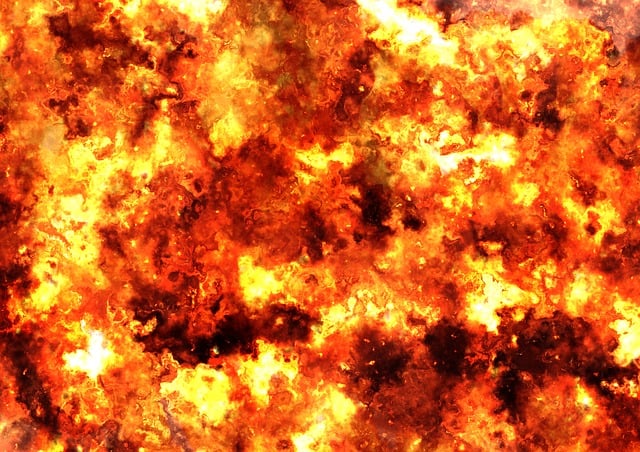San Antonio's winters pose unique challenges for HVAC systems due to freezing temperatures, heavy rainfall, and high humidity, leading to pipe bursts. To prevent these issues, invest in robust heating systems with insulation, anti-freeze solutions, and proper ventilation. Key steps include insulating exposed pipes, installing smart thermostats, regularly inspecting HVAC systems, clearing gutters, and focusing on energy-efficient heat pumps and building insulation/sealing during disaster reconstruction. These measures are crucial for preventing burst pipes, maintaining comfort, reducing energy costs, and minimizing environmental impact.
In San Antonio, where winters present unique challenges, proper HVAC system maintenance is crucial for resilience. This article explores how to navigate the season’s extremities, focusing on preventing burst pipes – a common disaster. We provide an in-depth guide on key steps to safeguard your system. Additionally, discover efficient strategies for disaster reconstruction and HVAC replacement, ensuring your home remains comfortable and secure during and after winter’s onslaught. Learn how to protect against freezing temperatures and the subsequent damage that can occur.
- Understanding the Unique Challenges of Winter in San Antonio for HVAC Systems
- Key Steps to Prevent Burst Pipes During Winter: A Comprehensive Guide
- Efficient Disaster Reconstruction and HVAC System Replacement Strategies
Understanding the Unique Challenges of Winter in San Antonio for HVAC Systems

San Antonio’s winters present unique challenges for HVAC systems, particularly regarding preventing burst pipes. The city experiences a significant temperature drop, often dipping below freezing, which can lead to severe consequences for poorly maintained or inadequately designed heating systems. In addition to cold temperatures, San Antonio also faces occasional heavy rainfall and high humidity levels during winter. These weather conditions exacerbate the risk of pipe bursts by increasing water pressure and causing rapid thermal expansion inside the pipes.
To mitigate these issues, it’s crucial to invest in robust HVAC systems that are equipped to handle the region’s unique winter dynamics. This includes implementing insulation measures to prevent pipes from freezing, using anti-freeze solutions where necessary, and ensuring proper ventilation to regulate humidity levels. Regular maintenance checks during the colder months can also help identify potential problems early on, preventing major disruptions in heating and comfort for San Antonio residents.
Key Steps to Prevent Burst Pipes During Winter: A Comprehensive Guide

Winter in San Antonio can bring extreme cold snaps, making it crucial to prepare your HVAC system for the season ahead. Preventing burst pipes is a top priority, especially as the city experiences freezing temperatures. Here’s a comprehensive guide on key steps to ensure your comfort and protect your property.
First, insulate exposed pipes to prevent water from freezing. Use heat tape or pre-filled heat circles to maintain a consistent temperature. Second, consider installing a smart thermostat to control heating efficiently during cold spells. Third, regularly inspect and clean your HVAC system to improve its performance and reduce the risk of damage. Lastly, ensure proper drainage by clearing debris from gutters and downspouts, allowing melted snow to flow away from your foundation.
Efficient Disaster Reconstruction and HVAC System Replacement Strategies

In the event of a disaster, efficient reconstruction and replacement strategies for HVAC systems are paramount to ensure comfort and safety, especially in regions like San Antonio where freezing temperatures can cause severe damage, including preventing burst pipes during winter. One key strategy involves utilizing heat pumps, which offer energy-efficient heating and cooling solutions. These systems can be particularly effective in moderate climates like San Antonio’s, as they can extract heat from the outdoor air even in cold weather, providing consistent indoor comfort without straining energy resources.
Additionally, prioritizing insulation and sealing of buildings is crucial for disaster reconstruction. Enhancing insulation helps maintain comfortable temperatures and reduces the load on HVAC systems. Sealing entry points prevents drafts and cold air infiltration, further optimizing system performance. This multi-faceted approach not only ensures efficient heating and cooling post-disaster but also contributes to long-term energy cost savings and reduced environmental impact, making it a strategic consideration for any reconstruction effort in San Antonio or similar regions.
In conclusion, navigating the unique challenges of San Antonio’s winters while ensuring efficient disaster reconstruction for HVAC system replacements is paramount. By understanding the risks and implementing proactive measures, such as preventing burst pipes during winter, professionals can deliver swift and effective solutions. Adopting comprehensive strategies that integrate robust heating, ventilation, and air conditioning systems not only restores comfort but also safeguards against future disruptions.
